It is well-nigh impossible on Google to find ANYTHING on Venezuela, giving any context.
All you can find are articles that say Venezuela's problems stem from mismanagement and "scoialism".
No country can survive when it has to deal with low oil prices within a context of Peak Oil and economic sanctions combined with attempts to undermine the government.
To get any true context you have to seek out articles from Peak Oil sites.
Impact of oil production decline and low oil prices: Venezuela
12 December, 2019
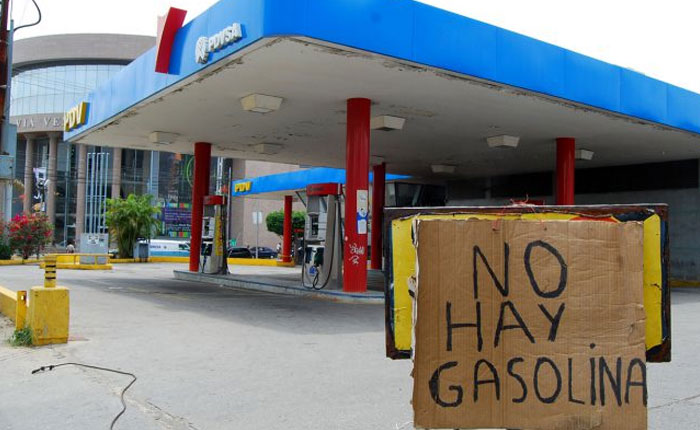
Venezuelan X’mas 2017 without petrol
https://losbenjamins.com/2017/12/venezuela-sin-gasolina-navidades/
Petrol lines are nothing new in Venezuela. But the problem is getting deeper and deeper:
Top Venezuelan refineries are running at 34% of their capacity
17/10/2017
PUNTO FIJO, Venezuela/HOUSTON (Reuters) – Venezuela’s main refining complex, hobbled by a lack of oil and maintenance issues, is down to operating at about a third of its 955,000-barrel-per-day capacity, according to a union official and documents from the state-run oil company PDVSA
https://www.reuters.com/article/us-refinery-operations-pdvsa-paraguana/top-venezuela-refineries-at-34-percent-of-capacity-union-documents-idUSKBN1CL2T0
17/10/2017
PUNTO FIJO, Venezuela/HOUSTON (Reuters) – Venezuela’s main refining complex, hobbled by a lack of oil and maintenance issues, is down to operating at about a third of its 955,000-barrel-per-day capacity, according to a union official and documents from the state-run oil company PDVSA
https://www.reuters.com/article/us-refinery-operations-pdvsa-paraguana/top-venezuela-refineries-at-34-percent-of-capacity-union-documents-idUSKBN1CL2T0
This is part 1 of articles on how Venezuela is hit by both declining oil production and the drop in oil prices since 2014. We start with:
Oil production
Please note that the data used in this article differ from source to source. Venezuelan government reports (PDVSA) will be on the high side. No effort was made to reconcile the numbers so every graph stands on its own.
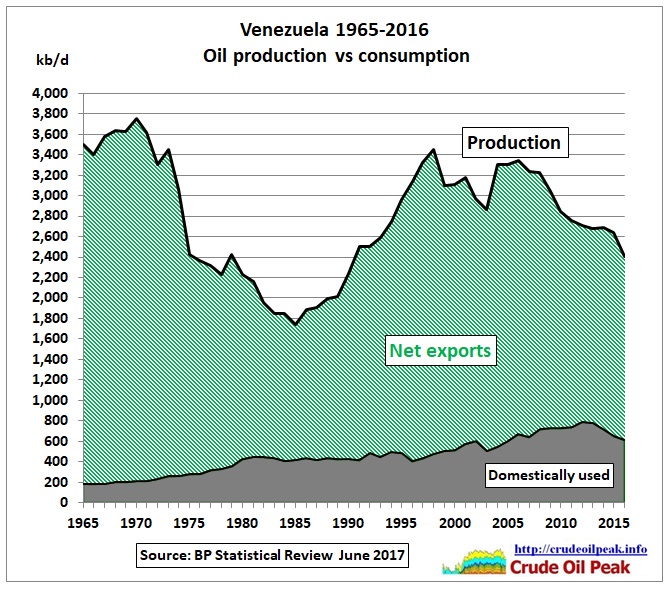 Fig 1: Double peak: drop in oil production since 2005. (PDVSA strike 2002/03)
Fig 1: Double peak: drop in oil production since 2005. (PDVSA strike 2002/03)
Fig 2: Venezuela crude production by basin 1970-2014 (IESA)
http://servicios.iesa.edu.ve/portal/ciea//eec%202014%20iesa%20ingles.pdf
http://servicios.iesa.edu.ve/portal/ciea//eec%202014%20iesa%20ingles.pdf
Maracaibo
Production started 100 years ago. In 2012 Jean Laherrere calculated that discoveries were 63 Gb and cumulative production 42 Gb.
http://aspofrance.viabloga.com/files/JL_Venezuela2012.pdf
http://aspofrance.viabloga.com/files/JL_Venezuela2012.pdf
Assuming that since then another 2 Gb were produced the depletion level is 70%, making it a mature basin.
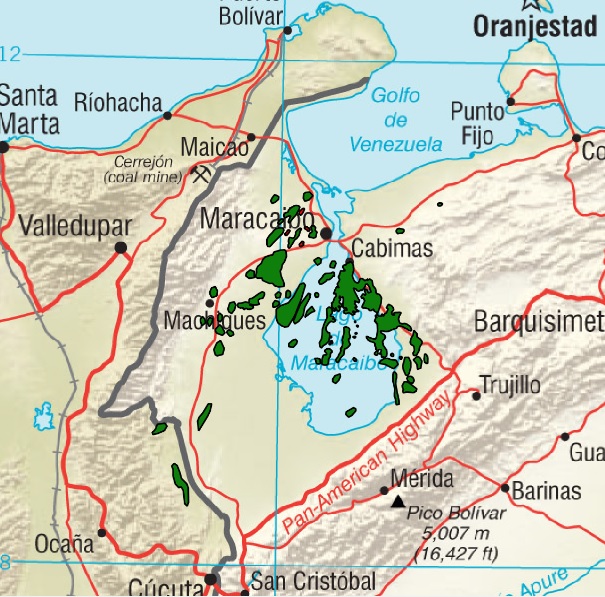
Fig 3: Oil fields in Maracaibo
http://energy-cg.com/OPEC/Venezuela/Venezuela_OilGas_Industry.html
http://energy-cg.com/OPEC/Venezuela/Venezuela_OilGas_Industry.html
With 1,000s of leaking, abandoned wells and corroding pipes in the lake, it is now an environmental disaster zone plagued by oil spills, subsiding coast lines and duck weed infestations (from sewage, fertilizers, industrial waste, chemicals).
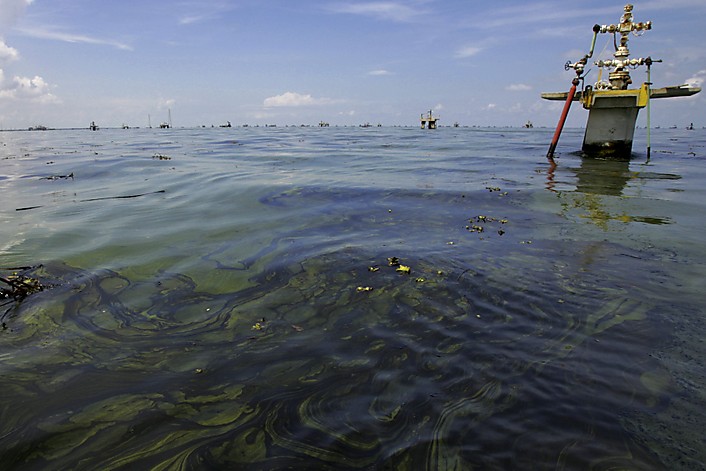
Fig 4: Lake Maracaibo oil slicks, platforms and rigs
https://pwmaracaibolake.wikispaces.com/Physical+Limnology
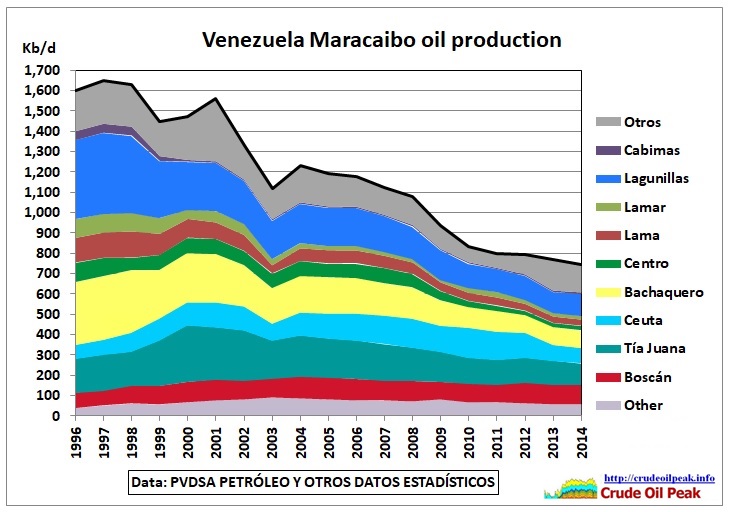 Fig 5: Maracaibo conventional production is in long term decline
Fig 5: Maracaibo conventional production is in long term declineOther areas
The 2nd peak in Fig 2 (1998-2008) was created by production from Venezuela’s eastern oil fields including the Orinoco extra heavy oil belt as shown in the next graph:
 Fig 6: Venezuela’s oil production by basin 1996-2015 (PDVSA)
Fig 6: Venezuela’s oil production by basin 1996-2015 (PDVSA)Production by type of oil
The following table shows the different types of crude oil, their gravity and sulfur content. The lower the API number, the heavier the oil.
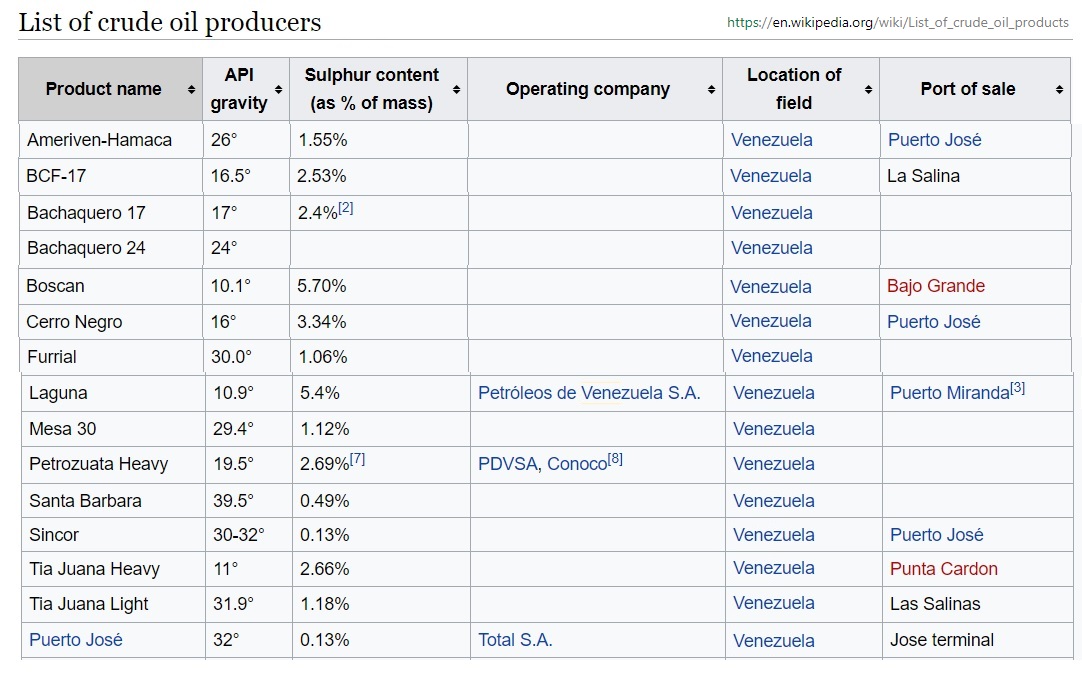 Fig 7: Venezuelan oil grades by API
Fig 7: Venezuelan oil grades by APIhttps://en.wikipedia.org/wiki/List_of_crude_oil_products
Sincor’s Zuata extra heavy oil from the Orinoco belt (Sincrudos de Oriente) is upgraded in El Jose.
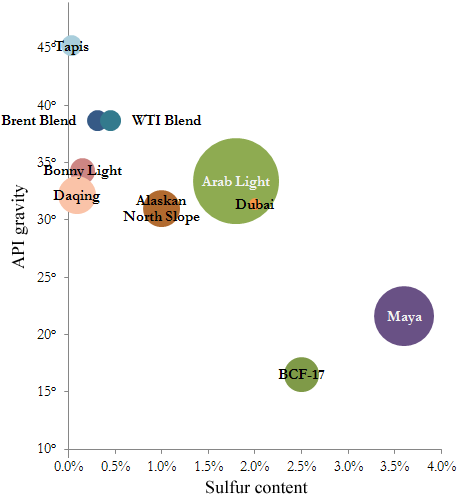 Fig 8: Gravity and sulfur content of Venezuelan BCF-17 compared to other oils
Fig 8: Gravity and sulfur content of Venezuelan BCF-17 compared to other oilshttps://upload.wikimedia.org/wikipedia/commons/e/eb/Crudes.PNG
We see Brent slightly under 40 degrees API with no sulphur, while BCF-17 from Venezuela’s Bachaquero field has only 16.5 degrees and a sulphur content of 2.5%
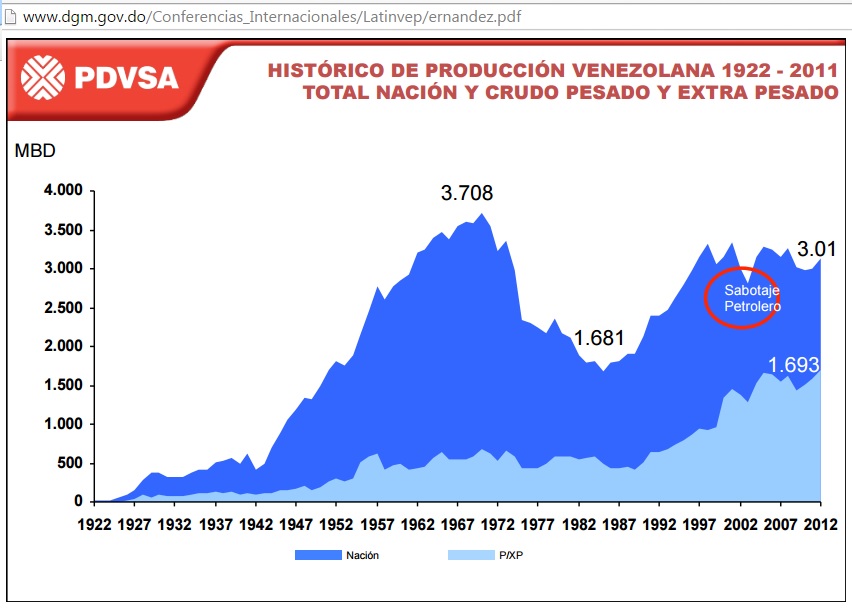 Fig 9: PDVSA oil production history, P=pesado (heavy) XP=extra pesado
Fig 9: PDVSA oil production history, P=pesado (heavy) XP=extra pesadohttp://media.arpel2011.clk.com.uy/lv2014/26/ernandez.pdf
Heavy and extra heavy oil production started to increase from around 1990. Zooming into more detail:
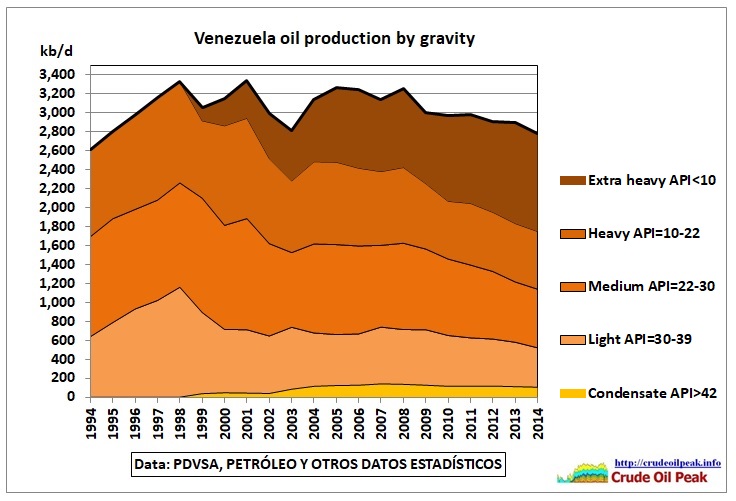 Fig 10: Venezuela oil production by gravity (API< 10 heavier than water)
Fig 10: Venezuela oil production by gravity (API< 10 heavier than water)
Orinoco heavy oil belt
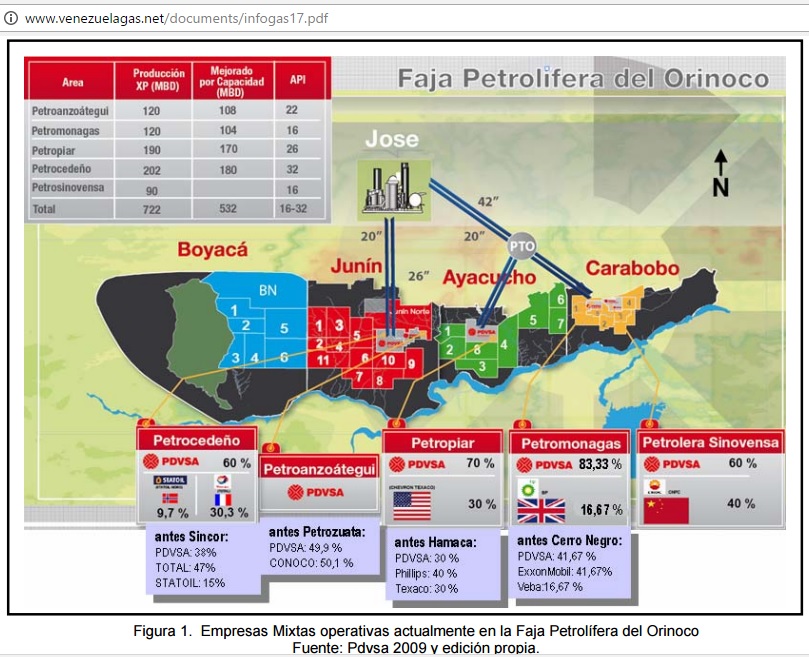 Fig 11: Oil blocks and companies in the Orinoco belt (2009)
Fig 11: Oil blocks and companies in the Orinoco belt (2009)http://venezuelagas.net/documents/infogas17.pdf
P and XP oil needs diluents (condensate, light oil, kerosene or naphtha) to be pumped in pipelines (diluted crude oil – DCO). For example, 0.6 barrels of 8.5º API extra-heavy crude can be blended with 0.4 barrels of 30º API Mesa crude, resulting in a blend known as 16º API Merey – still a heavy oil.
http://www.genesisny.net/Commodity/Oil/OSpecs.html
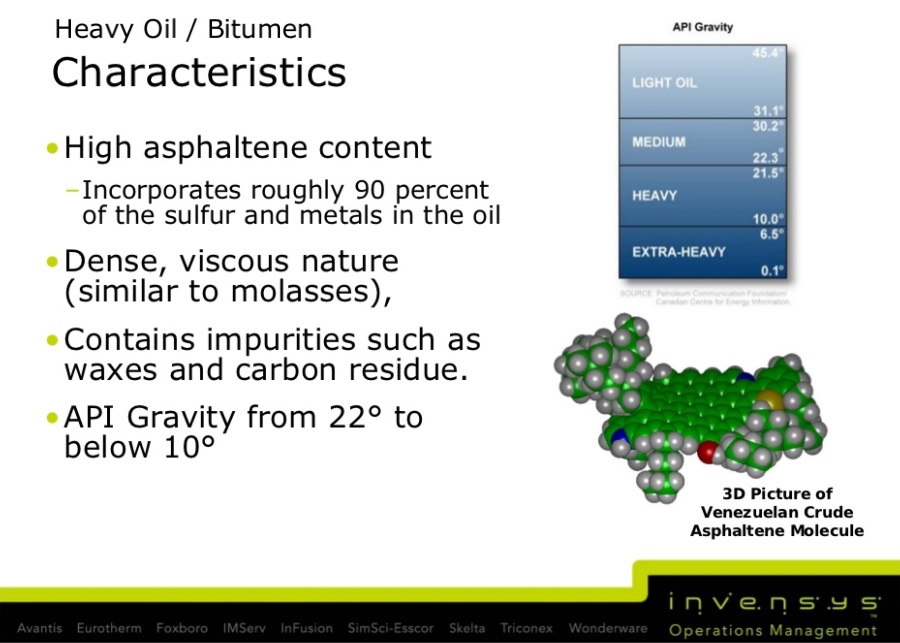 Fig 13: Heavy oil molecular structure
Fig 13: Heavy oil molecular structurehttps://www.slideshare.net/Invensys-NAregion/using-new-modeling-technology-to-help-solve-heavy-oil-processing-issues-final
The following sketch by a blogger describes how heavy oil is moved from the Orinoco oil field to upgrading plants and export terminals in El Jose.
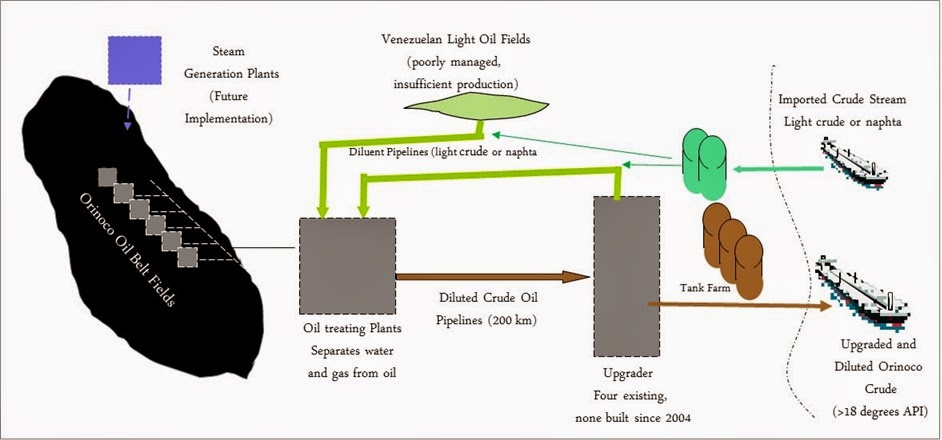 Fig 14: Transport and processing of extra heavy oil from Orinoco
Fig 14: Transport and processing of extra heavy oil from Orinocohttps://21stcenturysocialcritic.blogspot.com.au/2014/10/is-venezuela-running-out-of-oil.html
Diluted crude oil is either exported directly or as upgraded crude oil. There is a huge refinery complex at El Jose, 30 km west of the city of Barcelona.
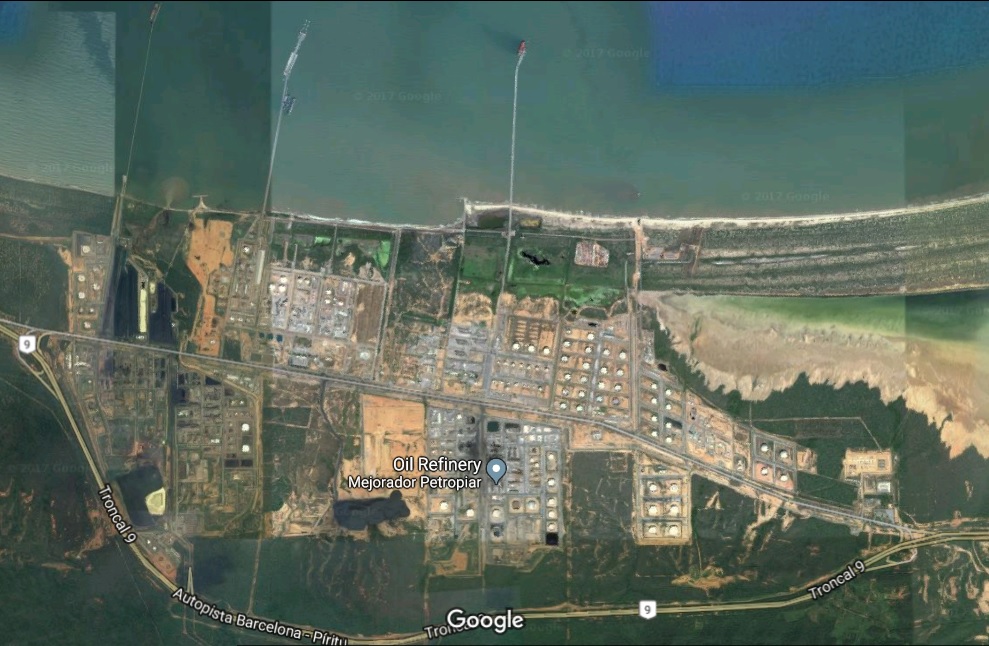 Fig 15: Upgrader refineries and tank farms in El Jose
Fig 15: Upgrader refineries and tank farms in El Jose
The upgrading of extra heavy oil creates big mountains of petroleum coke as can be seen on the above google image
 Fig 16: De-coking unit in José Antonio Anzoátegui
Fig 16: De-coking unit in José Antonio Anzoátegui
Fig 17: Disposal of petroleum coke from processing X and XT Orinoco oil https://twitter.com/ginger_to_you
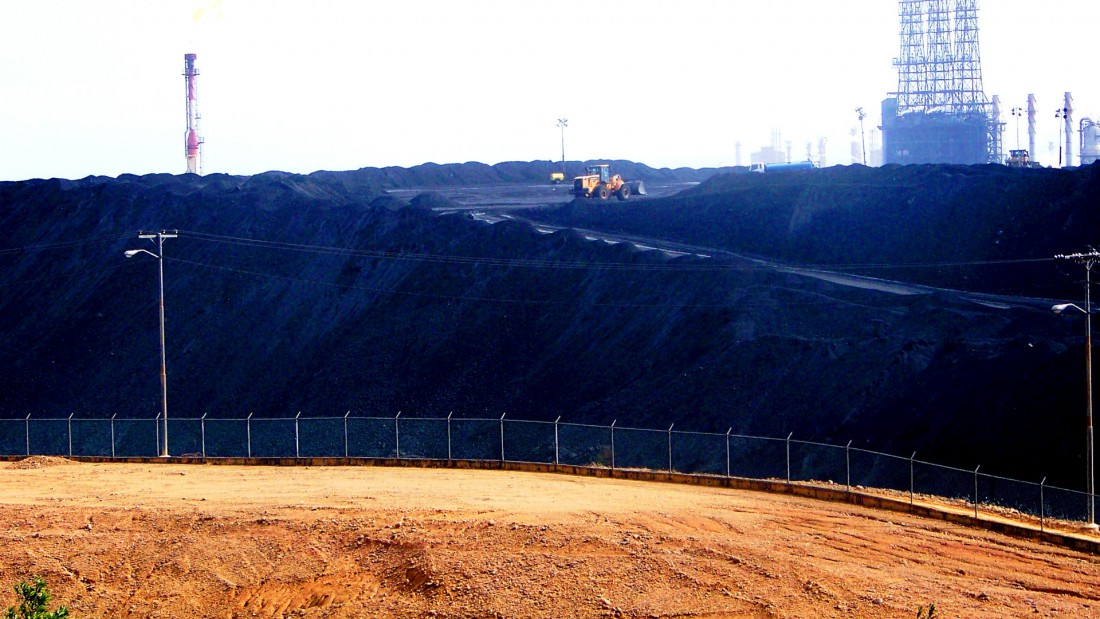 Fig 18: Mountains of petroleum coke are piled up, waiting to be exported
Fig 18: Mountains of petroleum coke are piled up, waiting to be exportedhttp://elestimulo.com/elinteres/oposicion-procura-ley-para-exportar-el-coque-acumulado-en-anzoategui/
. Fig 19: Venezuela petcoke production
Fig 19: Venezuela petcoke production
 Fig 19: Venezuela petcoke production
Fig 19: Venezuela petcoke production
It will not be easy to increase Orinoco production because of these complex handling and upgrading requirements.
Conclusion
Recent Jodi statistics show that production decline has accelerated in the last 2 years
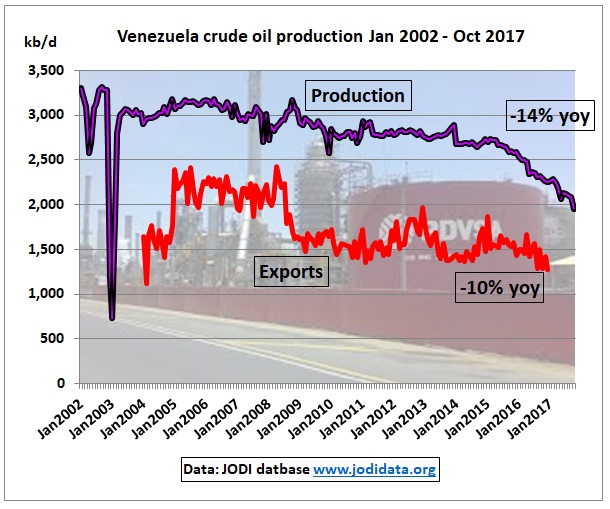 Fig 19: Venezuela’s crude production and exports – Jodi data
Fig 19: Venezuela’s crude production and exports – Jodi data
3/4/2017
National oil output tumbled last year on the back of constant refinery outages, an outflow of talent, and shortages of basic equipment in oil fields and imported diluents needed for blending with Venezuela’s heavy crude.
https://www.reuters.com/article/us-venezuela-politics-oil-analysis/venezuelas-maduro-wins-power-over-oil-despite-court-reversal-idUSKBN1740XF
National oil output tumbled last year on the back of constant refinery outages, an outflow of talent, and shortages of basic equipment in oil fields and imported diluents needed for blending with Venezuela’s heavy crude.
https://www.reuters.com/article/us-venezuela-politics-oil-analysis/venezuelas-maduro-wins-power-over-oil-despite-court-reversal-idUSKBN1740XF



No comments:
Post a Comment
Note: only a member of this blog may post a comment.